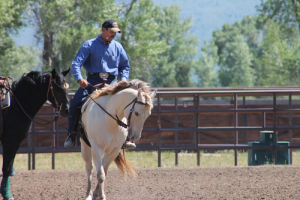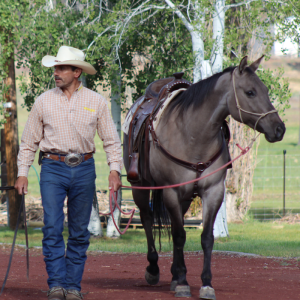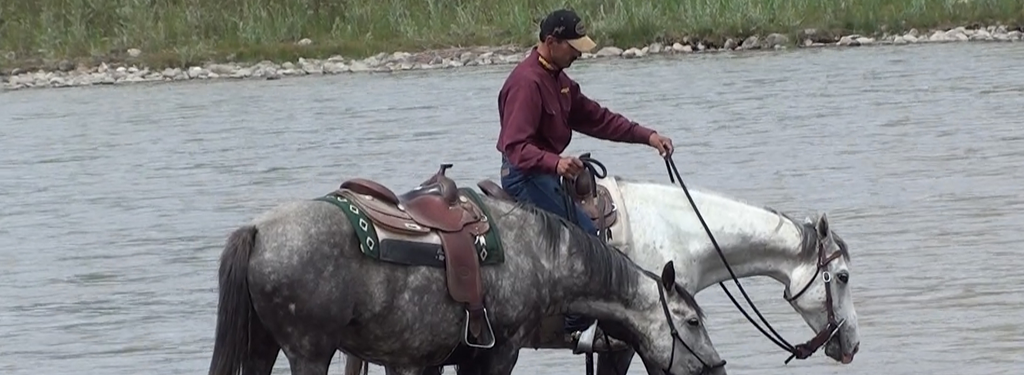Complete Horsemanship has two key elements.
First is the bridle work.
I can not emphasize enough the importance of consistent bridle work and lots of it. It is so important that our horse has a clear understanding of the bridle work. Through our consistency, we can teach any horse to be soft and light in the bridle. In addition, it is paramount that we can control not only the elevation of the horse’s head and neck through the bridle but also each corner of the horse (shoulders and hindquarters). Taking control through the bridle is how we will get our horse’s attention and keep us safe.
Second is working on the horse’s emotions.
Eliminating any fear, spookiness, nervousness, or other unwanted behavioral issues. Through emotional work and bridle work, we can teach our horse to start controlling his/her emotions. I believe it is reasonable for any horse to become afraid of something at some point. My goal in this situation is that I have taught my horse to control its fear and NO bucking, rearing, bolting, or running off.
Horses are capable of making their own decisions. When they make the wrong choice I focus on control, not containment. For example, if I’m riding a horse that for whatever reason refuses to stand still I focus on control through the bridle, not containment–not trying to make the horse stand still.

It is important to point out that these training methods can be the foundation work for any horse and any discipline. The amount of pressure we put on any horse during our training will always vary depending on the horse that we are working with at that time and what we are teaching.

Every horse during training will show some level of resistance and willingness. The idea is to slowly break down the resistance and teach our horse a “want to” attitude. Much of horse training is consistency, commitment, and repetition. Using these training methods will allow you to ride with confidence and control.
Above all, it will keep you and your horse safe.

